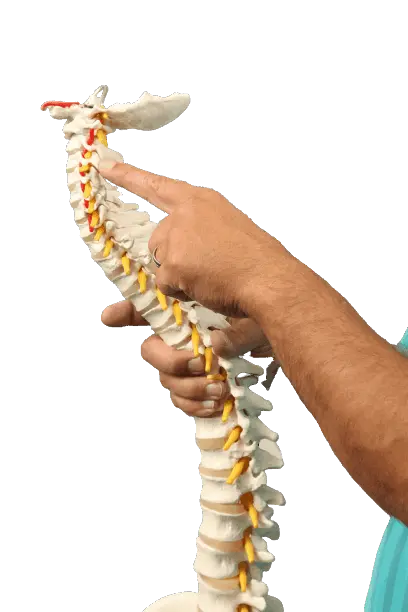Conditions We Manage
- Headache and Migraine
- Neck Pain
- Frozen Shoulder
- Back Pain
- Knee Pain
- Joint Pain/ Stiffness
- Muscle Spasm
- Numbness and Tingling
- Sciatica
- Scoliosis
- Sports Injury
- Slipped Disc
- Poor Posture



Chiropractic care is a healthcare discipline primarily focused on diagnosing and treating musculoskeletal disorders, particularly those related to the spine. Chiropractors are trained to assess, diagnose, and manage conditions that affect the musculoskeletal system, with a strong emphasis on the spine and its relationship to overall health. Chiropractic care typically involves manual manipulation and other non-invasive techniques.
The following are the potential benefits of chiropractic care.

Therapeutic ultrasound is a well-established modality in the field of physical therapy and rehabilitation. It harnesses the power of high-frequency sound waves, typically between 1 and 3 MHz, to impart therapeutic effects on musculoskeletal tissues.
Here are the key benefits of therapeutic ultrasound in treating various musculoskeletal conditions:

Soft Tissue Therapy (STT) is a therapeutic approach that focuses on addressing musculoskeletal conditions by targeting the body's soft tissues, including muscles, tendons, ligaments, and fascia. STT encompasses various manual techniques designed to alleviate pain, improve mobility, and enhance overall soft tissue health.
Here's a more comprehensive explanation of STT and its potential benefits:

Chiropractic care and physiotherapy, when combined, create a synergistic approach that addresses sports injuries and enhances athletic performance.

Electrical Muscular Stimulation (EMS) is a therapeutic modality that involves the application of electrical currents to stimulate muscles, typically through electrodes placed on the skin. EMS is used to address musculoskeletal disorders and promote muscle function and rehabilitation.
Here's a more in depth explanation of EMS and its potential benefits:

Transcutaneous Electrical Nerve Stimulation (TENS) is a therapeutic technique that involves the use of low-level electrical currents applied to the skin's surface via electrodes. TENS is primarily utilized to manage pain and alleviate discomfort related to musculoskeletal disorders.
The following is a more detailed explanation of TENS and its potential benefits